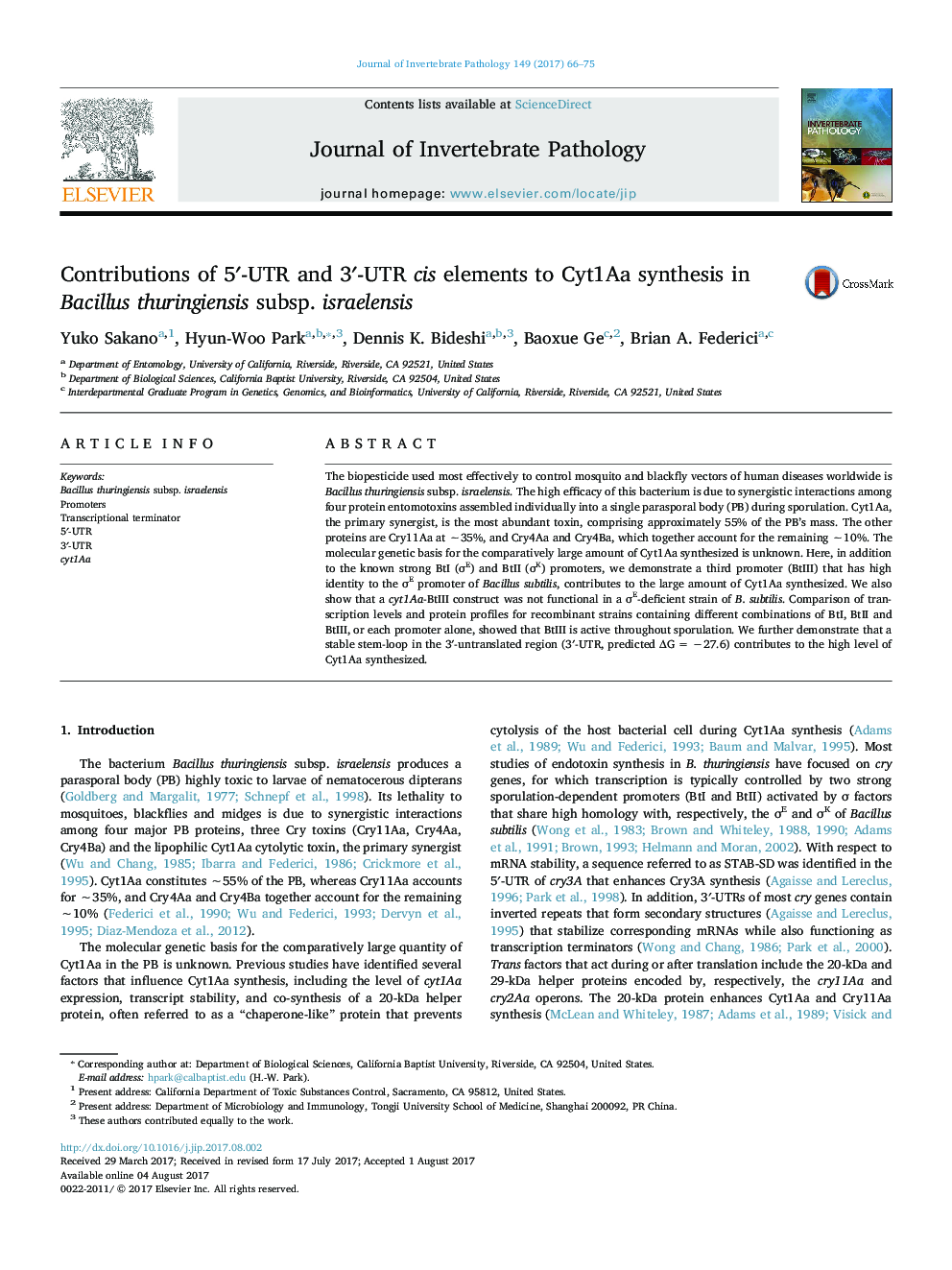| Article ID | Journal | Published Year | Pages | File Type |
|---|---|---|---|---|
| 5766931 | Journal of Invertebrate Pathology | 2017 | 10 Pages |
â¢Identifying the third promoter (BtIII) from the 5â²-UTR of cyt1Aa.â¢BtIII is not functional in a ÏE-deficient strain of Bacillus subtilis.â¢Demonstrating that a stem-loop in the 3â²-UTR contributes to the Cyt1Aa synthesis.
The biopesticide used most effectively to control mosquito and blackfly vectors of human diseases worldwide is Bacillus thuringiensis subsp. israelensis. The high efficacy of this bacterium is due to synergistic interactions among four protein entomotoxins assembled individually into a single parasporal body (PB) during sporulation. Cyt1Aa, the primary synergist, is the most abundant toxin, comprising approximately 55% of the PB's mass. The other proteins are Cry11Aa at â¼35%, and Cry4Aa and Cry4Ba, which together account for the remaining â¼10%. The molecular genetic basis for the comparatively large amount of Cyt1Aa synthesized is unknown. Here, in addition to the known strong BtI (ÏE) and BtII (ÏK) promoters, we demonstrate a third promoter (BtIII) that has high identity to the ÏE promoter of Bacillus subtilis, contributes to the large amount of Cyt1Aa synthesized. We also show that a cyt1Aa-BtIII construct was not functional in a ÏE-deficient strain of B. subtilis. Comparison of transcription levels and protein profiles for recombinant strains containing different combinations of BtI, BtII and BtIII, or each promoter alone, showed that BtIII is active throughout sporulation. We further demonstrate that a stable stem-loop in the 3â²-untranslated region (3â²-UTR, predicted ÎGÂ =Â â27.6) contributes to the high level of Cyt1Aa synthesized.
Graphical abstractDownload high-res image (110KB)Download full-size image
